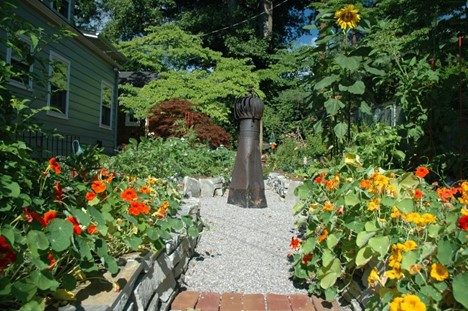EAT YOUR YARD
We tend to think of just growing a few veggies on our properties but consider planting many other edibles.
I remember the look on the face of a guest I had in our garden the first time we toured around and I stopped and popped a nasturtium bloom in my mouth and proceeded to savor that treat. “Yumm! Kind of peppery.” I think this person may have actually looked at their watch to take note of time of death should they be questioned later. Any time we eat something that isn’t packaged neatly by a grocer we feel like we’re getting away with something.
Although I’ve called Knoxville, Tennessee home for the past 40 years, I was raised in western New York. Home of lilac festivals and flowering crabapple. Both have excellent appeal with their bright blooms but the latter is also quite edible (some varieties tastier than others). Surprising to many lilacs blooms are also edible, though I confess I’ve never tried one.
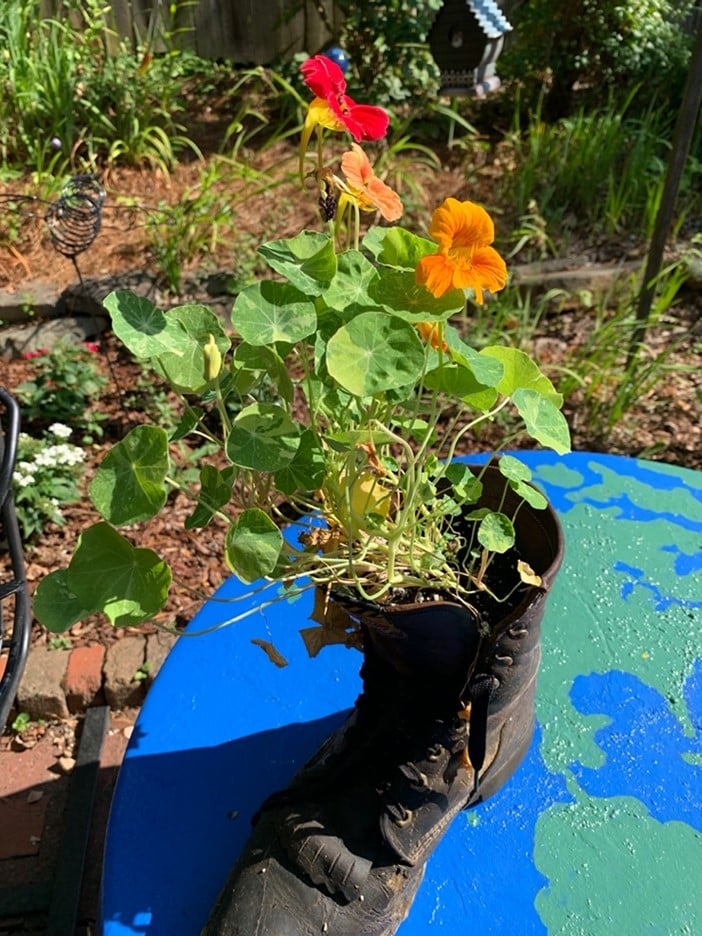
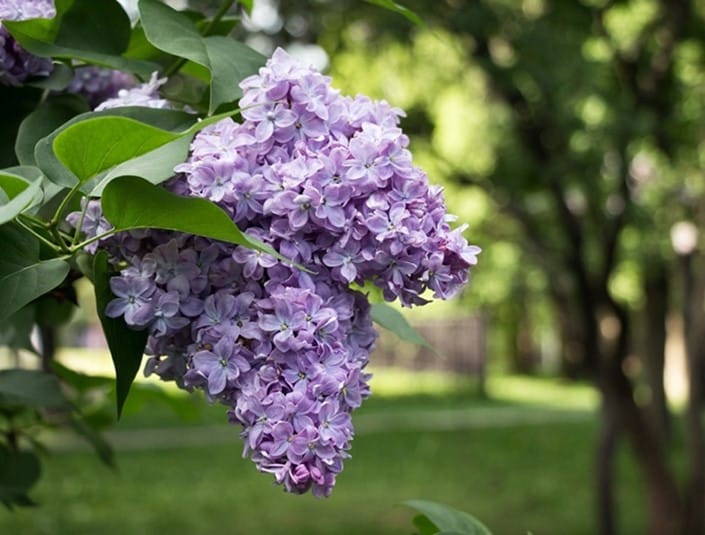
Our residential gardens have become quite predictable over the past 50 or so years. We love our lawns (or chemical sponges, as I’ve most recently been calling them) and sometimes punctuate them with a couple of ornamental trees. We hide our foundations with evergreen shrubs (evergreen of course since nobody likes change) and then if we’re feeling adventurous, we’ll cultivate a 10’ x 10’ square in the backyard and try our luck at growing a real tomato or two (which wind up costing about $26 per pound). These vegetable gardens are considered unsightly to the rest or the neighborhood thus the reason they are relegated to the back yard. Admittingly, ours is also located behind our home in a few raised beds.
My goal with this writing is not to tell you to dig up your front yard and plant soybeans or corn but rather just be a bit more adventurous with your plant selection. When the phrase “edible landscape” is tossed about it means just that. Will the plant you’ve installed produce anything that you can consume? And if that answer is no for the diet of humans, does it perhaps produce a flower, fruit or nut that can feed some wildlife?
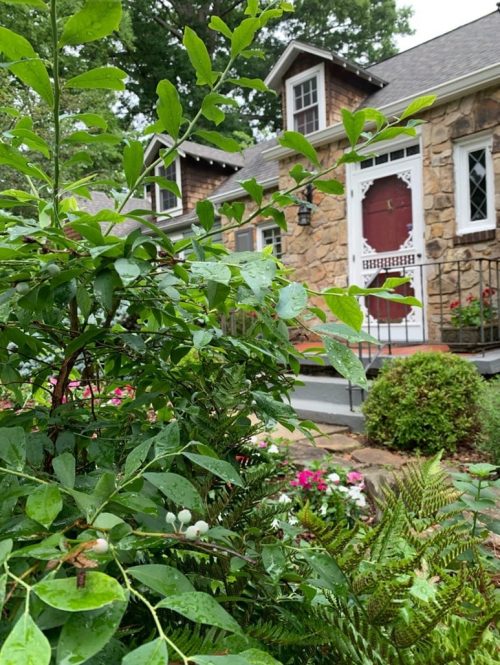
A quick side story, as I’m very known to do. There is a native plant conference hosted annually by Western Carolina University in Cullowhee, NC. Dr. Doug Tallamy (author of Bringing Nature Home) was the keynote speaker one of the summers I attended. It was very inspiring to say the least and I won’t dive into to details here but suffice it to say that upon my return home I did a quick loop around our property and I was a bit sad by the number of plants I saw that had no visible sign of something eating the leaves! (No, I don’t always conform to the norm). “Our plants are worthless! Nothing is a part of the food chain.” Many folks head straight for the chemical cupboard the second they spy any insect chewing in their gardens. What is important to remember is that those insects are in turn feeding other fauna such as birds, frogs, etc. so we need to rethink how pristine we want our gardens to appear.
Alright, I’ve deviated a bit so allow me to continue touting the benefits of including edible plants in your garden. When you think about the huge selection of plants available to you that are tasty (I’ll rattle off a list further along), there is little reason to not to use these in some way. One limitation some may say is the size in which edible plants eventually attain. Blueberries, figs, paw paw, persimmon and such do indeed need some real estate. But plants such as strawberries, mint, thyme, and other herbs take up very little room and may even be grown in containers (see last month’s blog). With many fruit trees it is possible to train these to take up virtually no space by training them espalier-style against or wall or fence (see my “Grow Up” blog entry).
Water is always a primary consideration when designing and installing any garden. So, consider placing those edibles that require a little more TLC nearer the house (strawberries, blueberries, and citrus if you’re latitude is a bit further south than ours.
There is a company in Nashville (Nashville Foodscapes https://www.nashvillefoodscapes.com/
that specializes in helping clients understand the relationship between our landscapes and nutrition. If you ask and look around, you’ll likely find someone or a company that offers similar services for your area.
If you envision a weedy patch when you picture a vegetable or edible garden you may want to consider creating an herb spiral as more artistic amenity. The premise here is to have a fairly compact and contained edible feature that places herbs needing less water near the top of the spiral and those requiring more moisture near the base. Here is an image but if you Google “herb spiral” you’ll find many more examples.
A few really great books to consider if anything above inspires you:
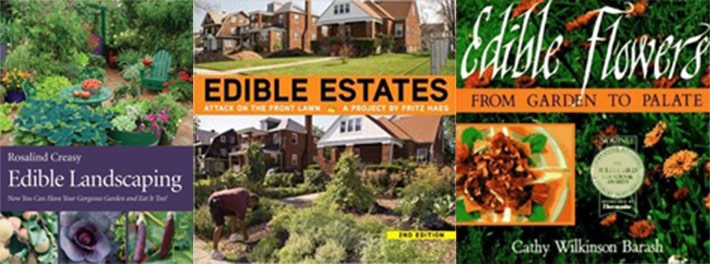
Edible Landscaping by Rosalind Creasy
Edible Estates, Attack on the Front Lawn by Fritz Haeg
Edible Flowers, From Garden to Palate by Cathy Wilkinson Barash
Wrapping things up, here is a list of plants that not only provide some beauty but nutrition. So even though the spring planting season has past, consider ripping out some juniper or yews and replacing these with something that you can add to your plate or salad.
The List:
All the fruit and nut trees, lilac, crabapple, paw paw, serviceberry, kousa dogwood, persimmon, blueberry, blackberry, fig, elderberry (Guincho purple or Thundercloud), grapes, mountain mint, Swiss chard, artichoke, basil, chives, oregano, rosemary, thyme, sweet woodruff, pansy / viola, lavender, beebalm, cat tail, lotus, etc. etc. etc.
This list is by no means complete but I do have to add a lawyeresque disclaimer. Don’t ingest anything that you aren’t 100% sure is safe. Yes, this includes those cute mushrooms springing up near your wood pile. That is the subject for another writing.
